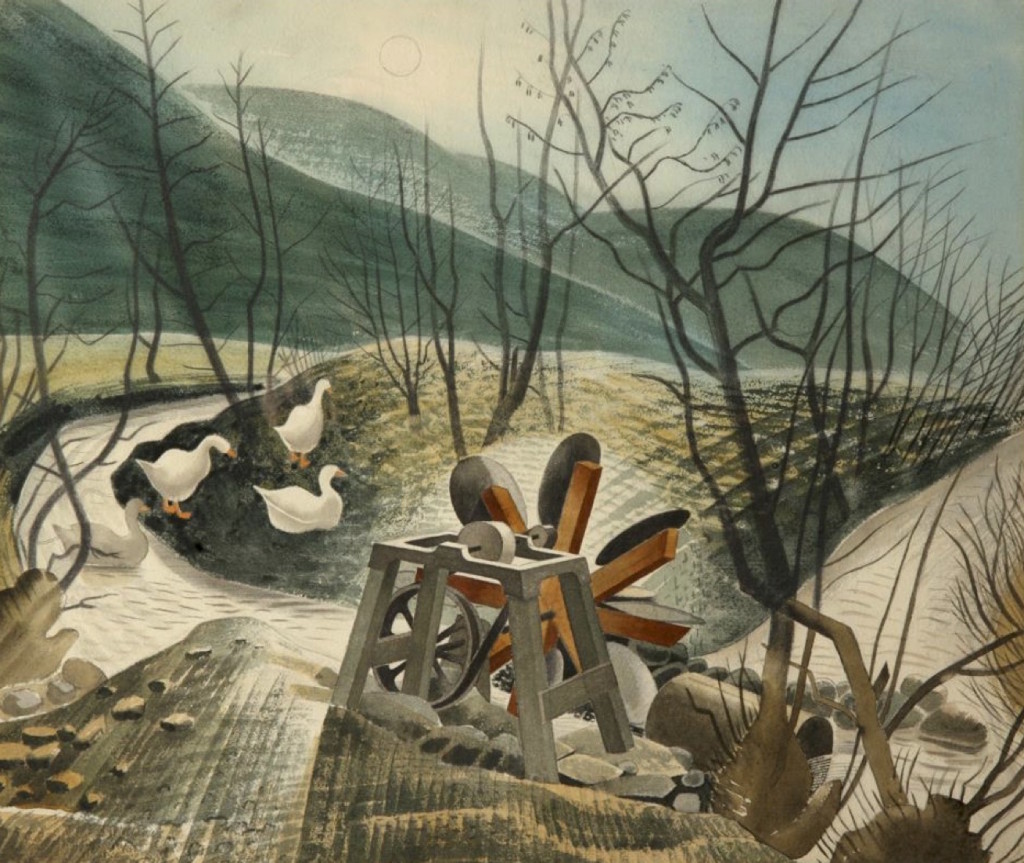In July, Michael Baron, a friend of the Dulwich Picture Gallery, arranged for his fellow members of the advanced poetry class at Morley College, with their tutor Sarah Wardle, to visit the Eric Ravilious Exhibition. For some people, particularly those based in North London, this was their first visit to the gallery – but it is unlikely to be their last.
Ravilious had a close connection with Morley College as he and his friend Edward Burra painted murals for the College which sadly were destroyed when the building was bombed in WW2. The exhibition delighted the Morley group and several people wrote poems inspired by their favourite pictures, of which the Waterwheel poem reproduced here, is one.
Ravilious’s slightly surreal period style perhaps lends itself to this kind of speculation, linking as it does distinctive representation with an aura of gentle mysticism. We acknowledge the support of the Ravilious Estate, the Brecknock Museum and Art Gallery (Powys); and the Dulwich Picture Gallery for this marvellous, eye-opening, exhibition.
The Waterwheel: A Painting by Eric Ravilious
by Sue Verney
A partnership of geology and man
defines landscape here, downland
hills of smooth serge green, lit by
cloud filtered winter sunlight above
the wide valley, with its fast moving
stream circling in an oxbow
with a tributary and narrow dam
feeding the flow to the waterwheel,
a local artisan machine powering
the belt of a knife grinder’s stone,
to sharpen tools for carpenter or farm.
A gaggle of geese paddling nearby
are not yet aware of their destiny.
Graphic lines, ancient or man made,
define shapes which appear settled
in time and space, partly abstracted
implying a life beyond themselves.
Curves suggest melodic expansion,
lyric completion, a cradle of comfort,
or eternal circles like sun or moon,
whereas straight lines point like
swords, or meet with abrupt angles
like the thin skeletal winter trees,
or wooden frame of the waterwheel.
But what delight in texture here –
Ravilious’s wood carving skill
infusing surfaces, shaping
the slightly comic ladle-like
curves and propeller design
of the waterwheel paddles;
and his lithographer’s latticing
highlights stones, a pathway,
furrows on the sage green island,
or ripples on the stream flowing
around it. Above the ground bass
and tenor layers, watercolours
resonate softly and clearly like
English folk songs, with reticent
intensity and optimistic calm,
quietly defying the fascist threat
of the period with an almost
transcendent trust in natural
beauty, national ingenuity,
and the history and mystery
of harmonious design.


